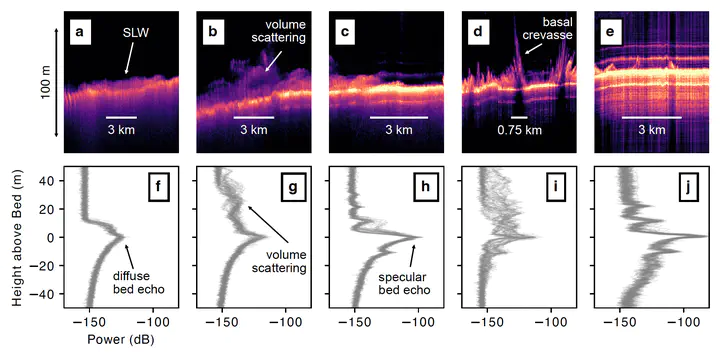Entrained Water in Basal Ice Suppresses Radar Bed‐Echo Power at Active Subglacial Lakes

Abstract
Subglacial lakes have been mapped across Antarctica with two methods, radio‐echo sounding (RES) and ice‐surface deformation. At sites where both are coincident, these methods typically provide conflicting interpretations about the ice‐bed interface. With a single exception, active subglacial lakes identifiedby surface deformation do not display the expected flat, bright, and specular bed reflection in RES data,characteristic of non‐active lakes. This observational conundrum suggests that our understanding of Antarctic subglacial hydrology, especially beneath important fast‐moving ice streams, remains incomplete. Here, we usean airborne RES campaign that surveyed a well‐characterized group of active subglacial lakes on lower Mercer and Whillans ice streams, West Antarctica, to explore inconsistency between the two observational techniques. We test hypotheses of increased scattering and attenuation due to the presence of an active subglacial lake system that could suppress reflected bed‐echo power for RES observations in these locations, finding that entrained water is most plausible.